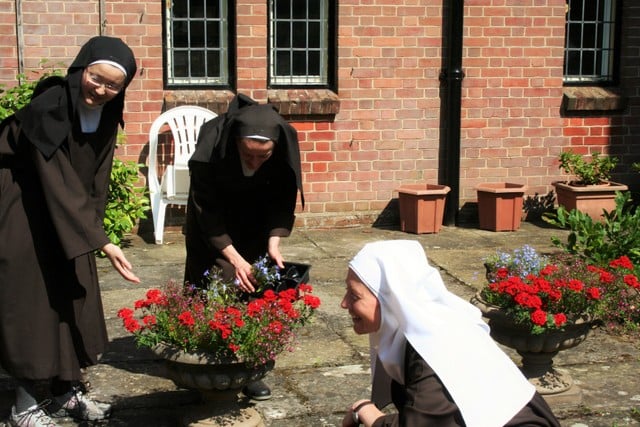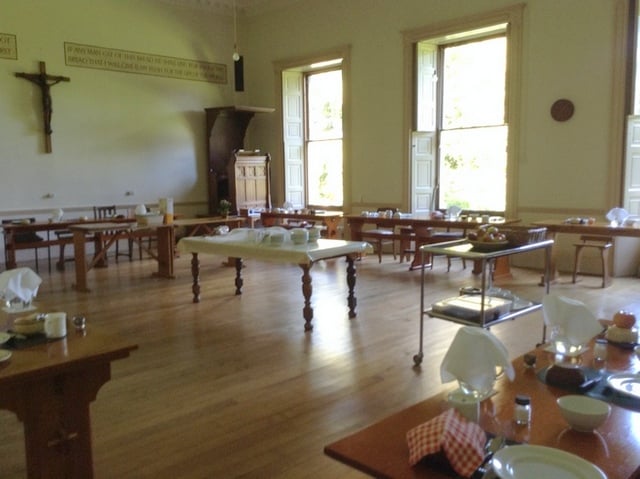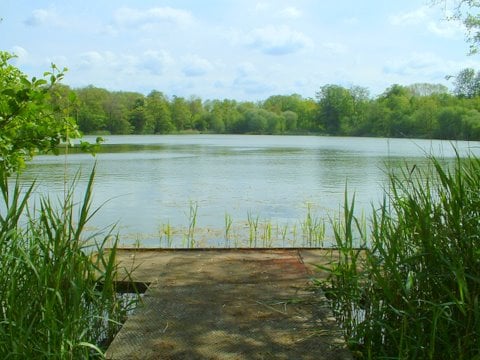 Life together as a community of friends, sharing a common ideal, and praying and working together on behalf of the Church and the world, is a distinctive feature of the Carmelite contemplative vocation as it was first envisaged by Saint Teresa of Avila, foundress of the Carmelite Reform. Teresa deliberately sought to moderate the intensity of a purely hermit life by incorporating specific times for relaxation and recreation into the timetable. It is this combination of both solitary and communal elements that gives Carmel its special character.
Life together as a community of friends, sharing a common ideal, and praying and working together on behalf of the Church and the world, is a distinctive feature of the Carmelite contemplative vocation as it was first envisaged by Saint Teresa of Avila, foundress of the Carmelite Reform. Teresa deliberately sought to moderate the intensity of a purely hermit life by incorporating specific times for relaxation and recreation into the timetable. It is this combination of both solitary and communal elements that gives Carmel its special character.
“In this house all must be friends with each other,
love each other,
be fond of each other and help each other”
St Teresa of Avila
EVENING RECREATION
One of Saint Teresa’s most original initiatives was to include short periods in the day when the Sisters were encouraged to come together to talk freely with each other as they worked. At Quidenham the community comes together for an hour’s recreation period each evening which may be spent in any number of ways. Often lively, it is a time when conversation ranges far and wide, hobbies are shared and enjoyed and entertainments amongst ourselves may be planned and prepared.
On feast days and special occasions the timetable is sometimes modified to allow extra time for personal relaxation or community celebration, providing us with opportunities for more personal contact and the chance to share ideas at a deeper level. Encounters with each other, such as these, are more easily enjoyed than described, but underlying them all is the more serious element of using these opportunities to grow in mutual understanding and appreciation, helping us to grow in the charity of Christ.
The community takes advantage of many opportunities to broaden its range of concern and keep in touch with current issues. During the course of the year, lectures offered by guest speakers keep us informed about a wide range of subjects, newspapers are available, and we also receive a number of periodicals, books of general interest and fiction. Hobbies are encouraged and many of us meet regularly during the recreation hour to share a common interest such as music or drama.
However, we do not participate in outside social events and only rarely make use of the more intrusive forms of media, such as TV, film or radio. Instead we try to utilize the resources that lie within the community by creating our own enjoyments and entertainments and encouraging each other’s gifts and talents.
THE REFECTORY
The Refectory is a place of coming together each day in a way that is particularly expressive of community. As well as praying together and meeting together for recreation, eating together as a community is an important element of our life. The monastery Refectory is arranged in such a way that the tables form a circle around the room, making visible the bond of unity between us. Meals are taken in silence while one of the Sisters reads aloud from a reading desk. It is often in this context that documentation regarding the concerns of the Church or the Carmelite Order is shared. But books of mainly topical interest are also read during the course of the year, keeping us abreast of important issues and information.
 Our diet is a good one. As Carmelites we do not eat meat; however, fish and cheese are included in the menu. A significant amount of our fresh fruit and vegetables comes from our own kitchen garden to be enjoyed in season. We also make a lot of our own crusty bread, enjoy our own honey and drink our own homemade wines and cider!
Our diet is a good one. As Carmelites we do not eat meat; however, fish and cheese are included in the menu. A significant amount of our fresh fruit and vegetables comes from our own kitchen garden to be enjoyed in season. We also make a lot of our own crusty bread, enjoy our own honey and drink our own homemade wines and cider!
ENCLOSURE
Our primary relationship with the outside world is defined by enclosure. This important dimension of Carmelite existence means, in practice, that we do not go out of the monastery unless it is strictly necessary nor permit members of the public to enter in. Designated guest areas outside the enclosure allow the Sisters to meet visitors or conduct necessary business, and the Public Chapel is open throughout the day for those who wish to join us in worship. However, the enclosure itself remains a place set aside for the community where each member can follow, undisturbed, her primary commitment to silence and prayer. At the same time we believe that our vocation holds us at the heart of the world and we make its deepest concerns our own. It is a life for others.




